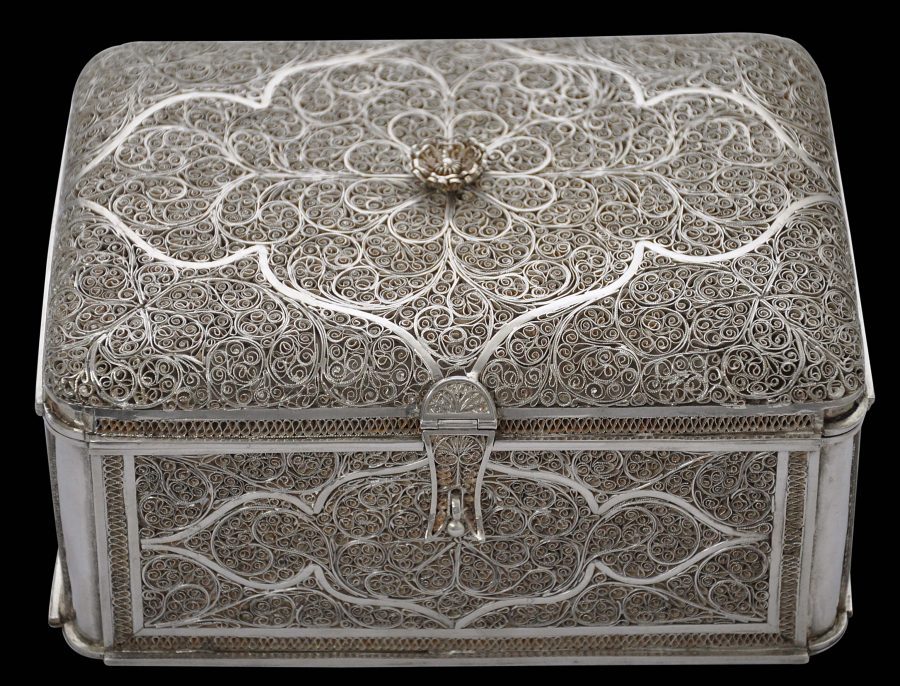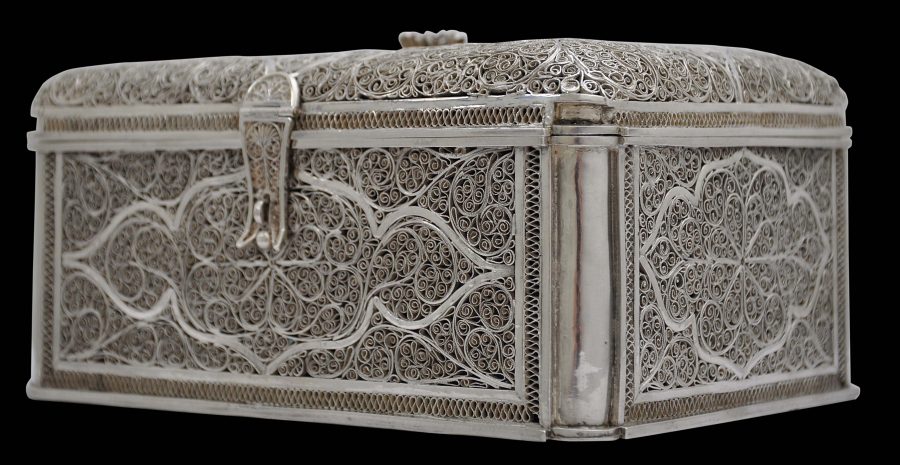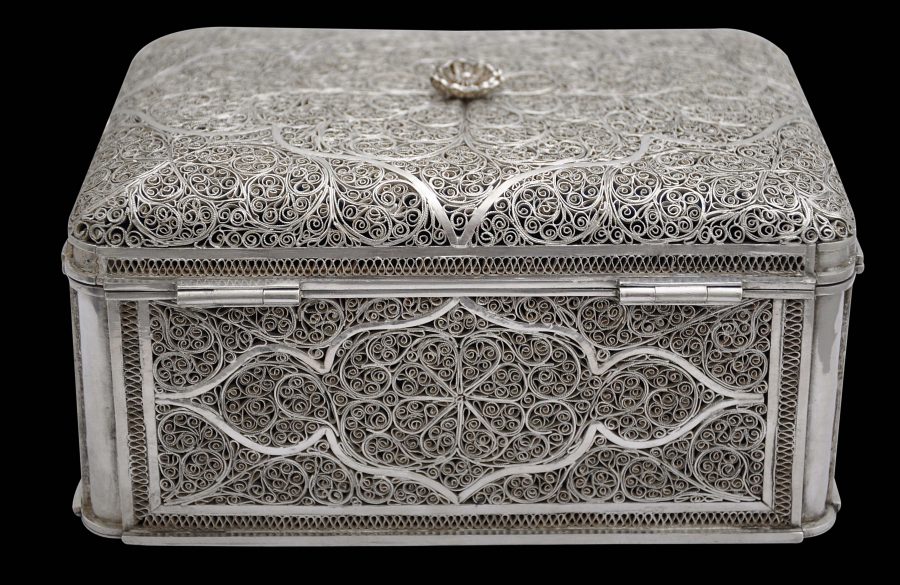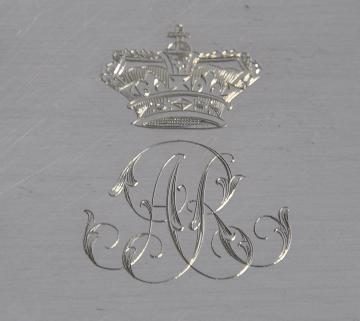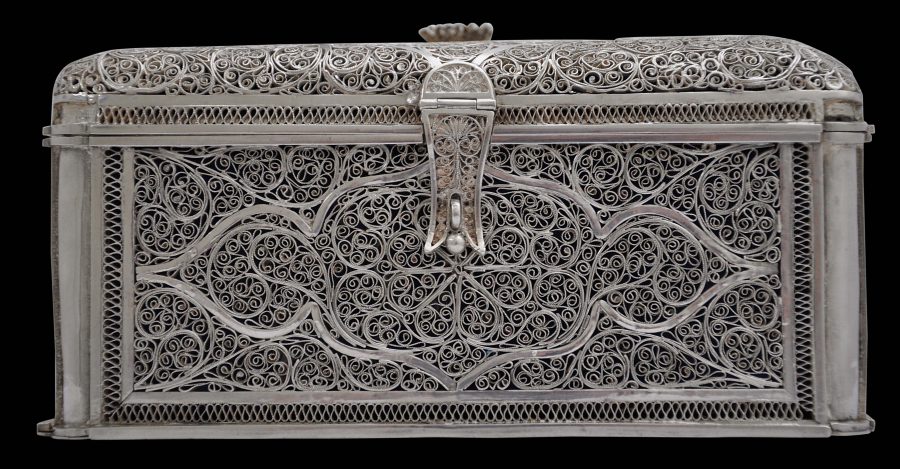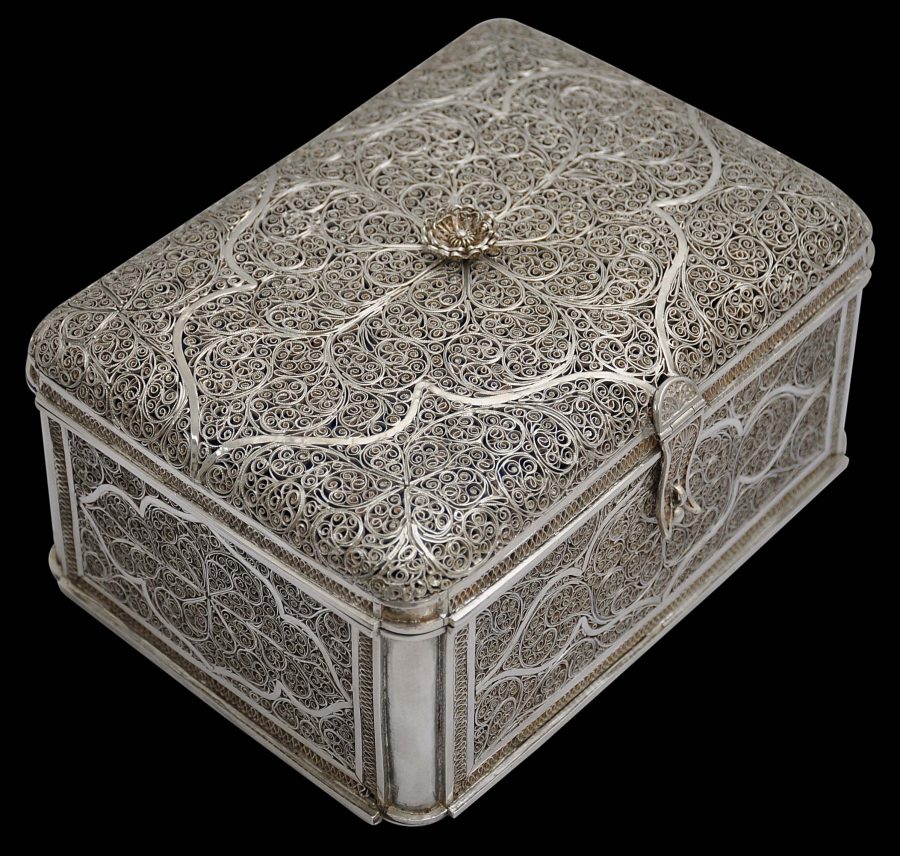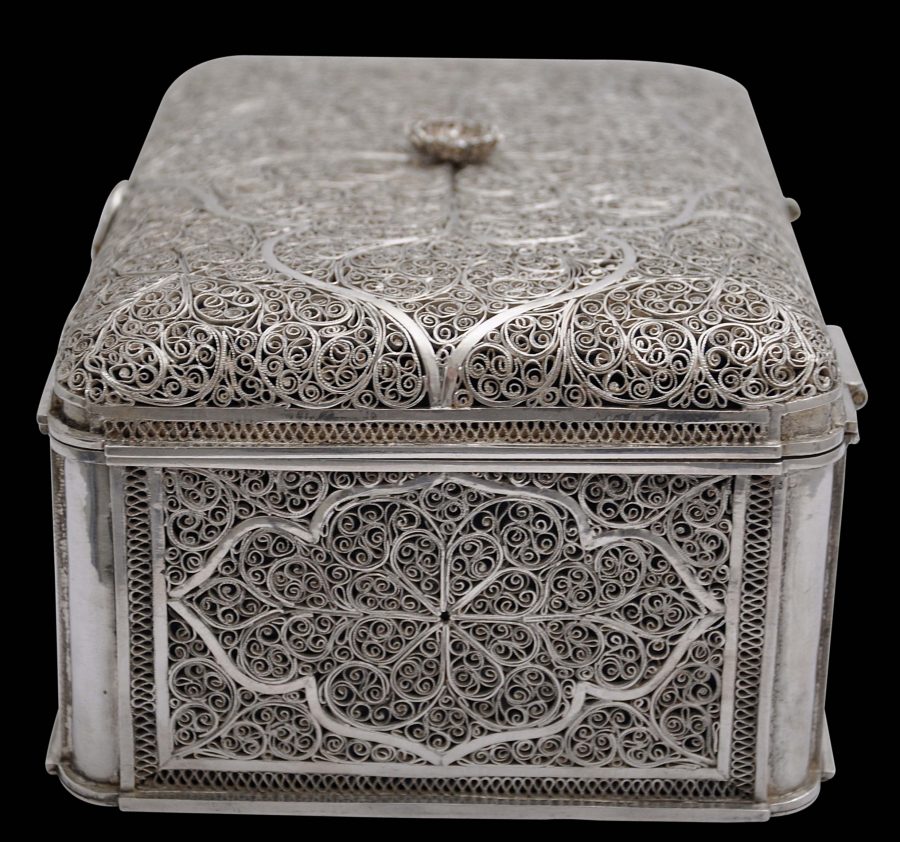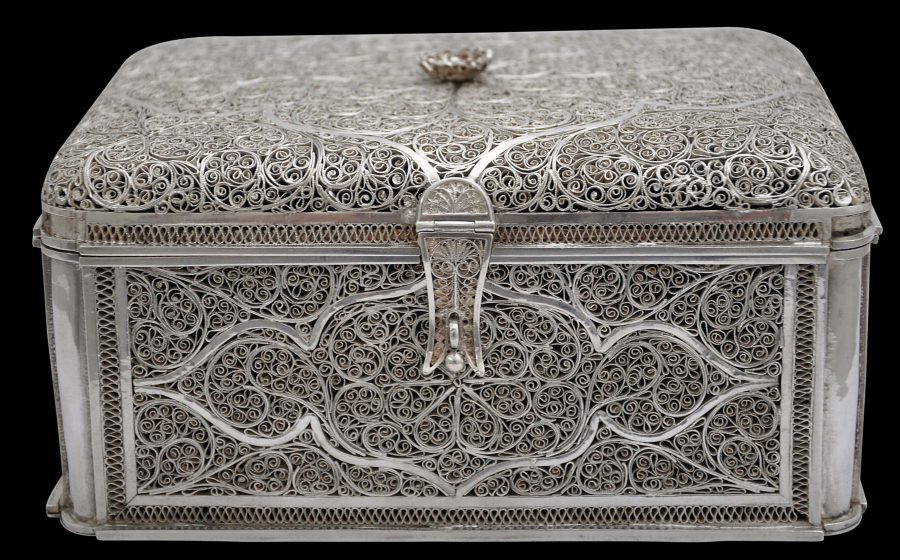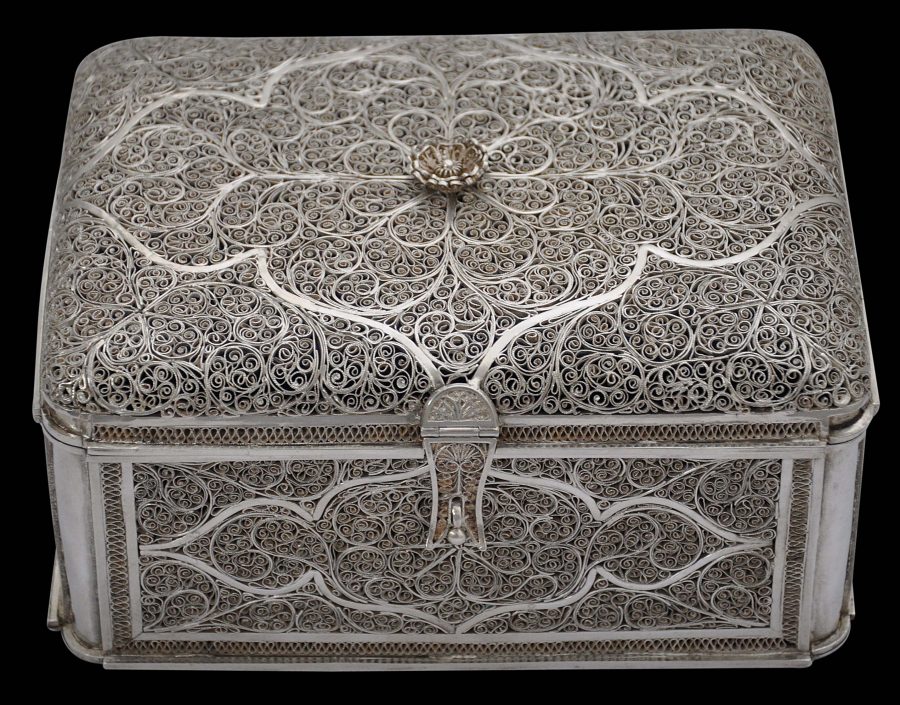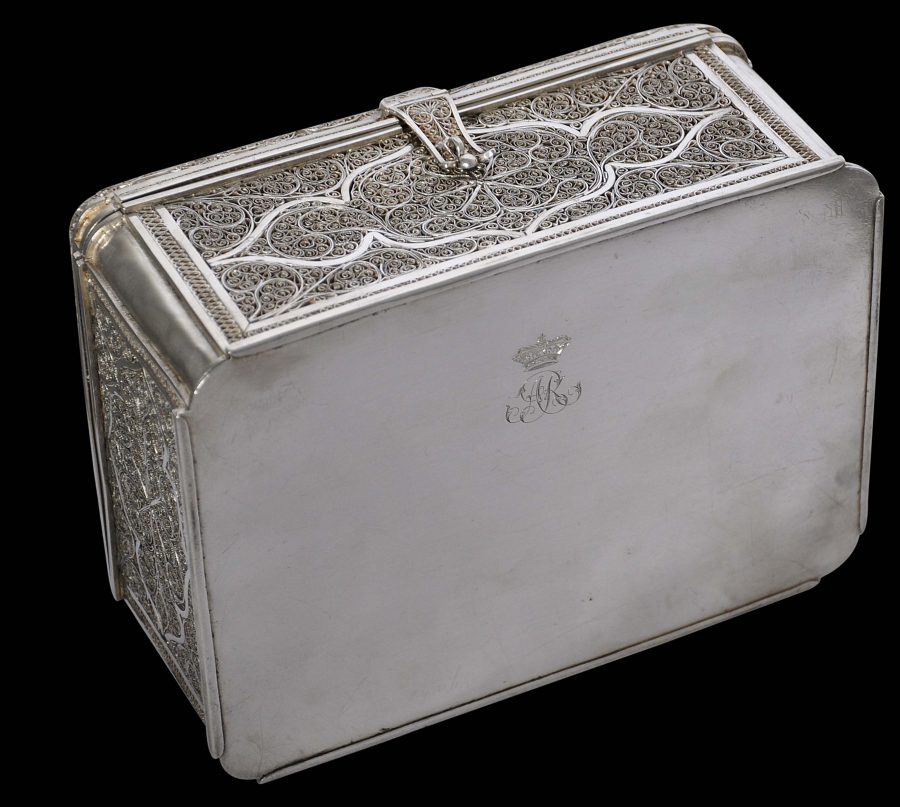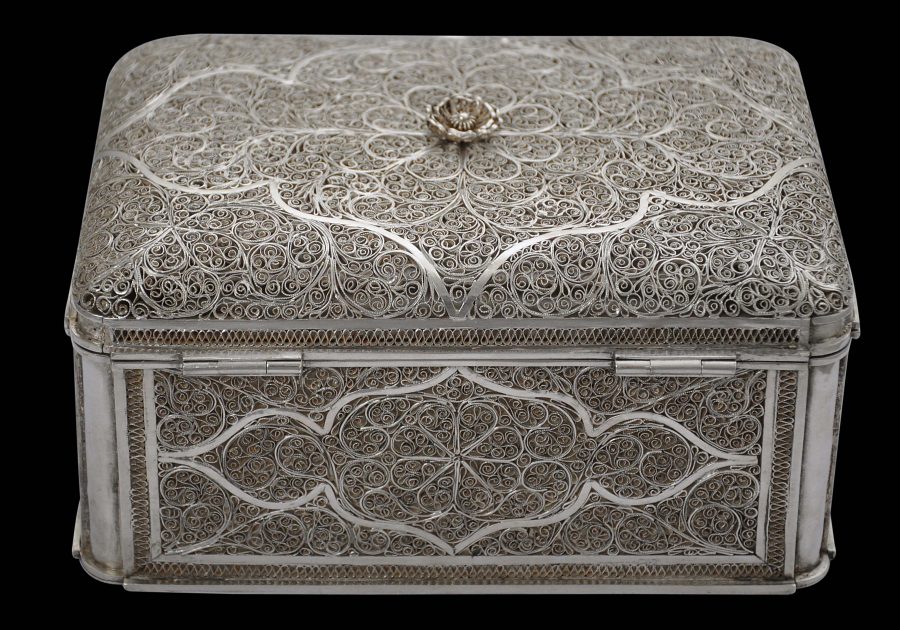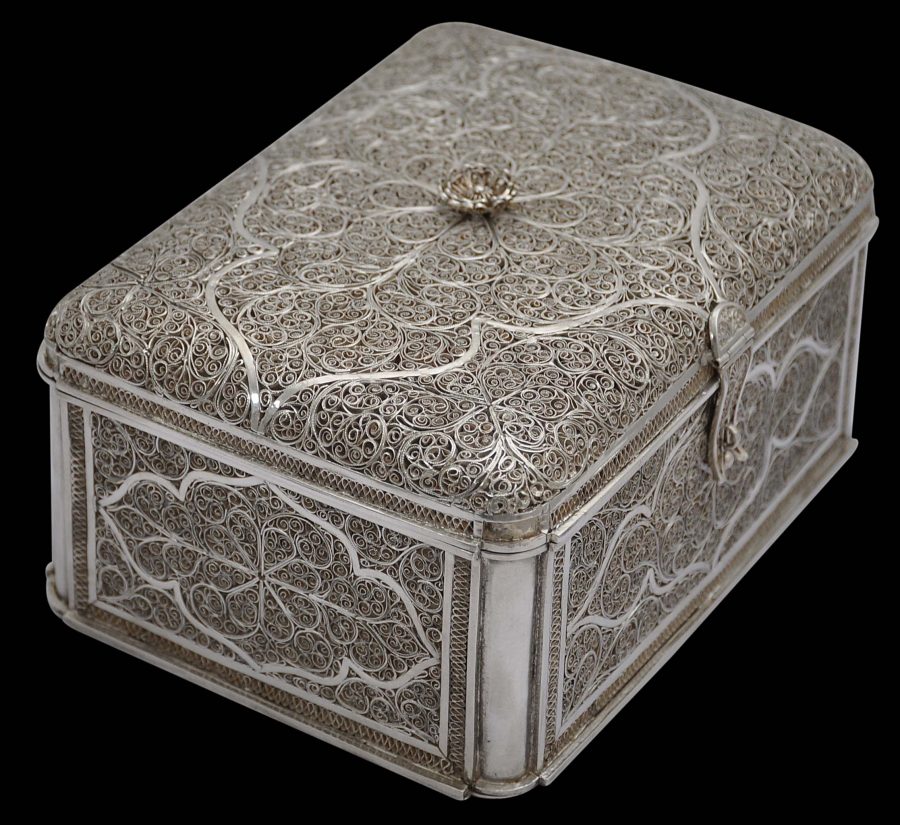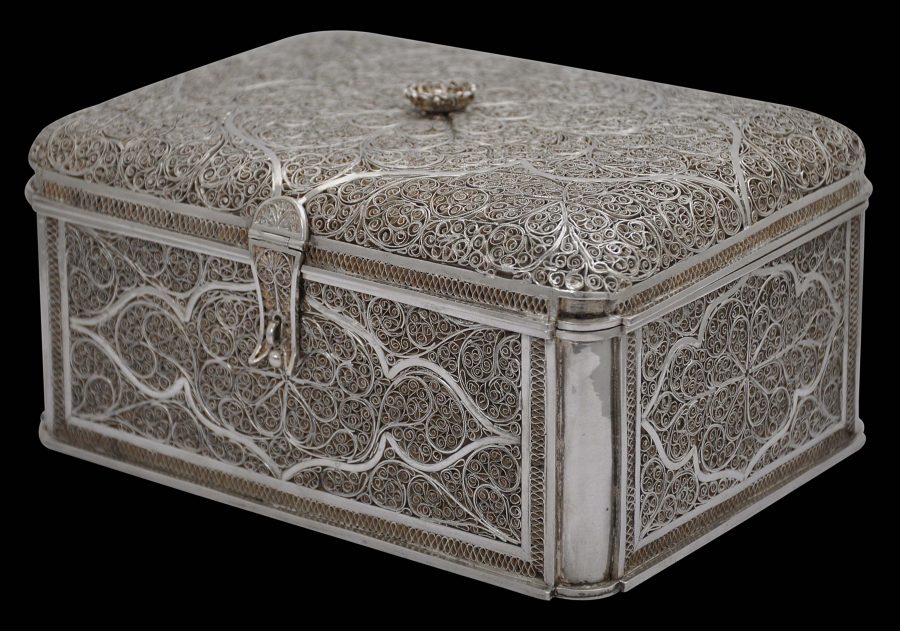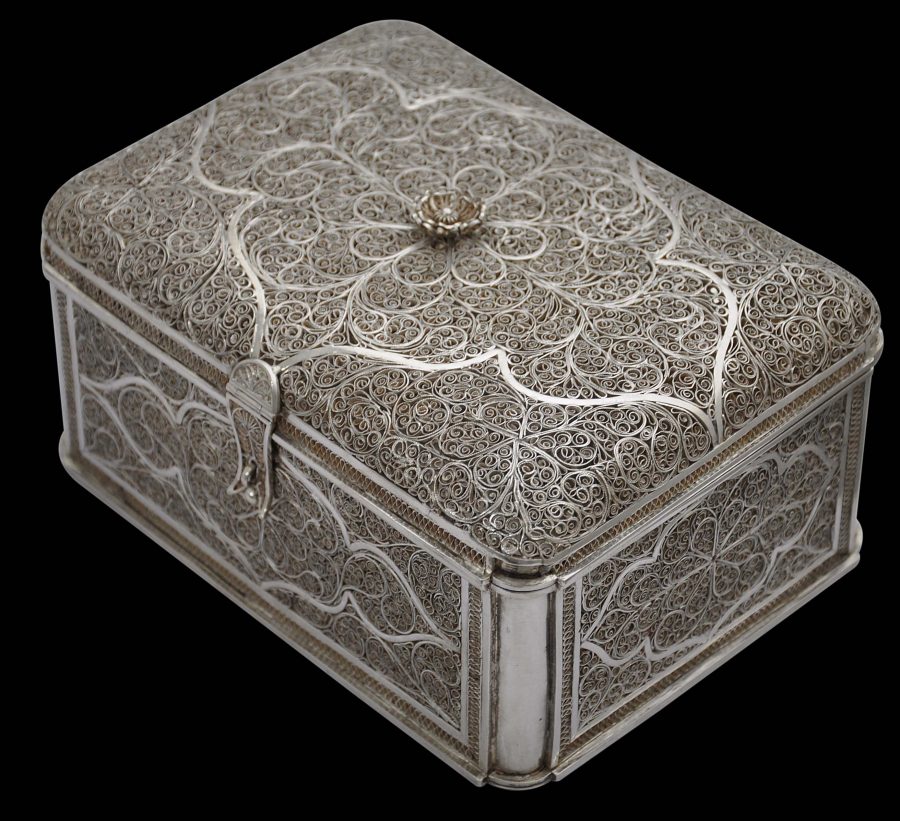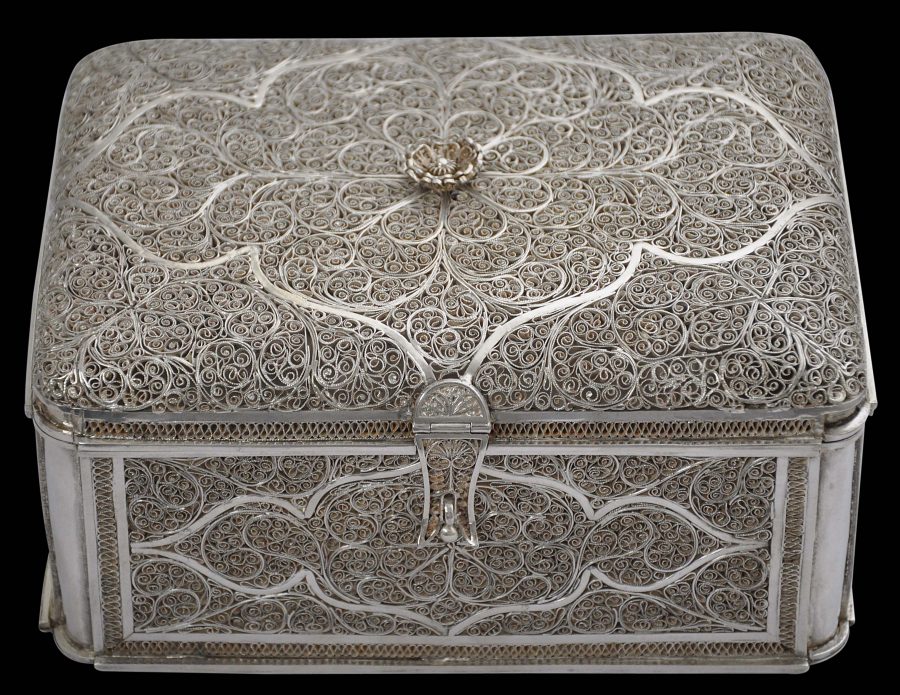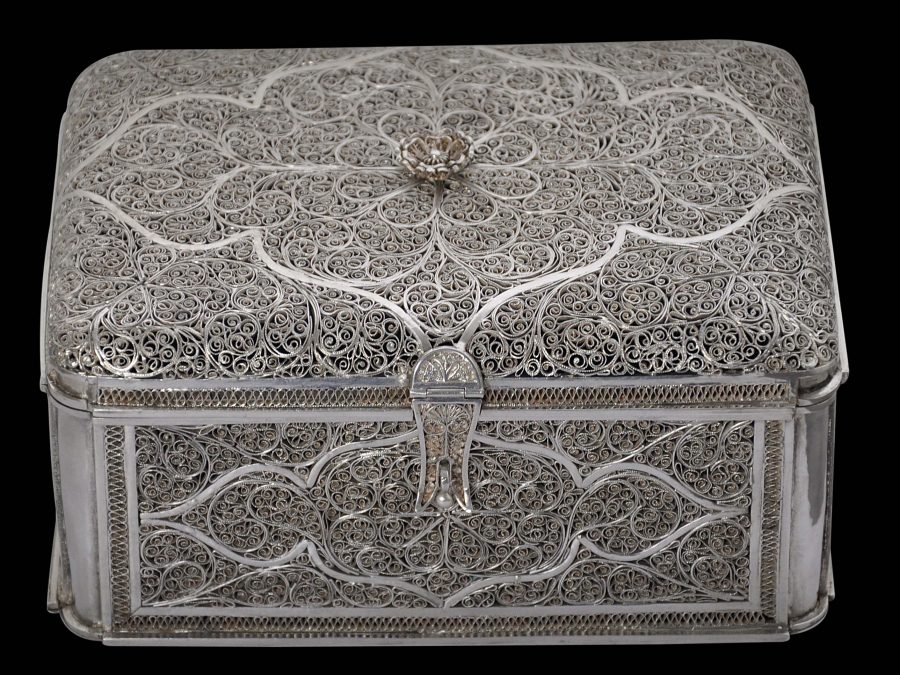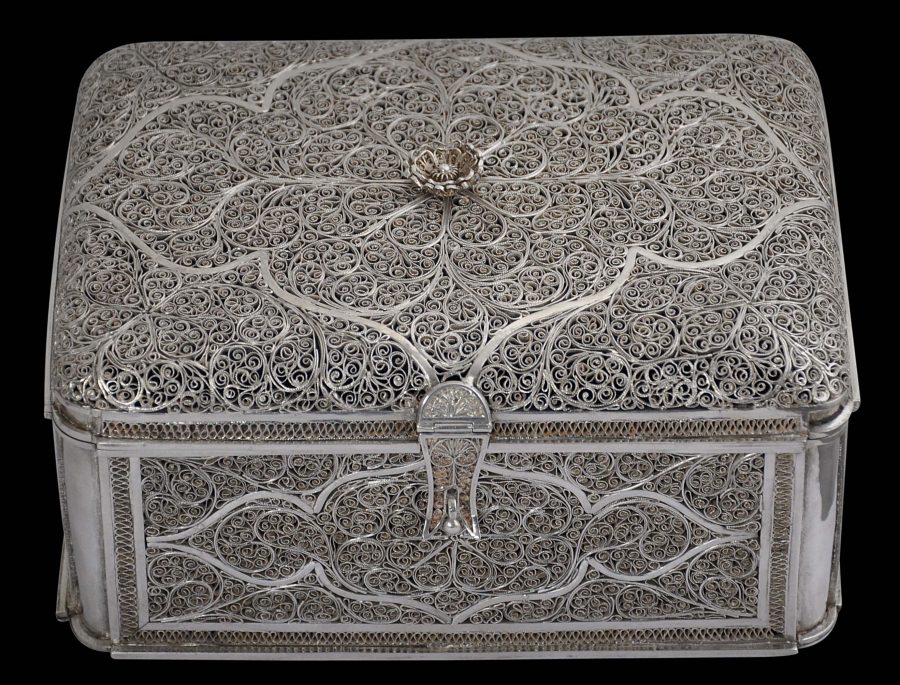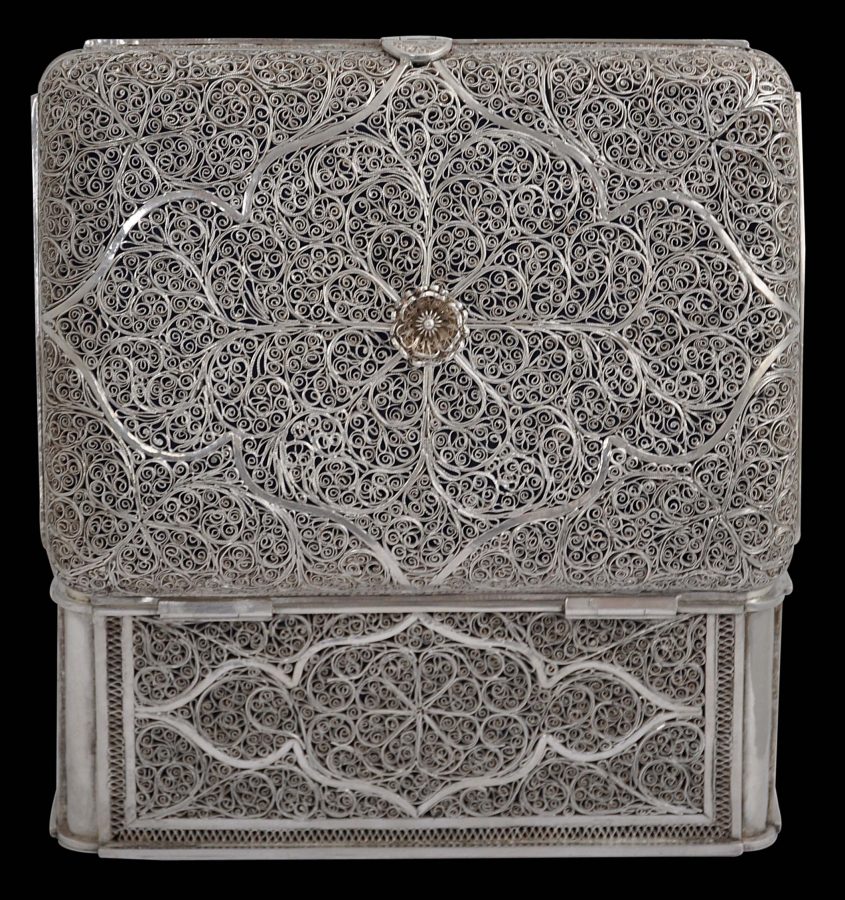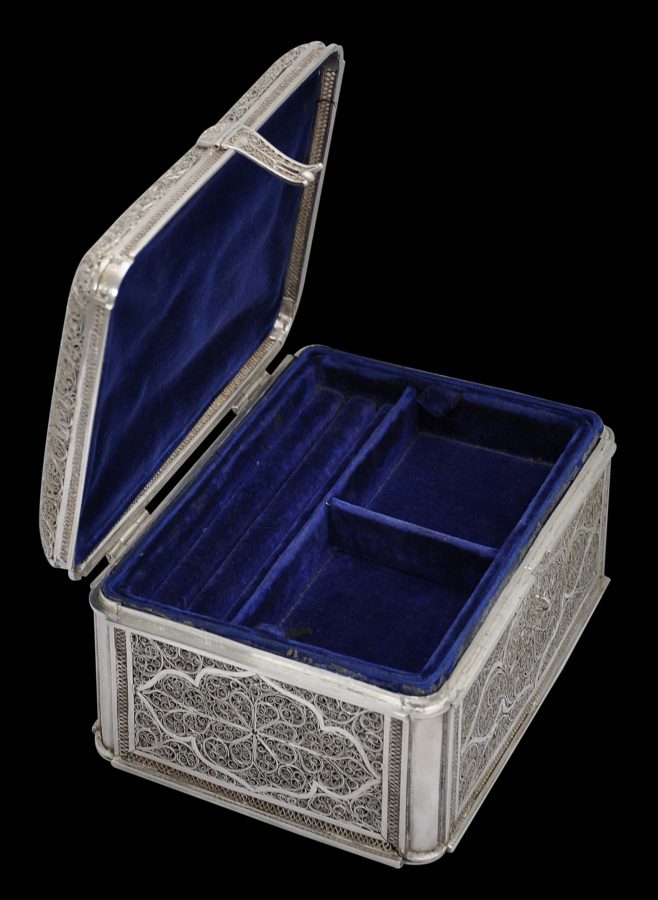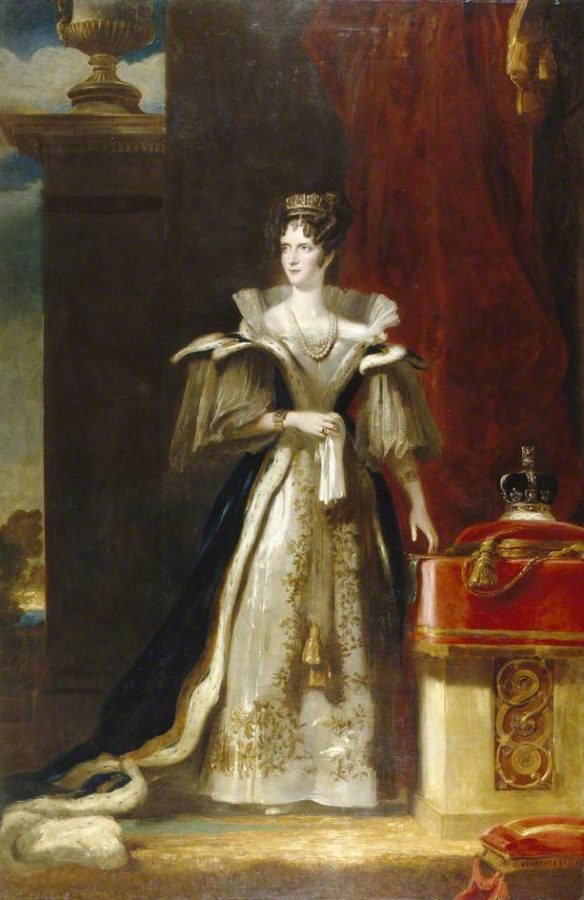This large silver filigree lidded box was used by Queen Adelaide (b. 1792-1849), consort to King William (r. 1830-1837), as a jewellery box. (Adelaide, the capital city of the Australian state South Australia, is named after her.)
The underside of the box’s base is engraved with Queen Adelaide’s royal cypher: the initials AR beneath a crown. (‘AR’ stands for Adelaide Regina; a royal cypher is a monogram-like device of the reigning sovereign). The interior is fitted with blue velvet lining, although this is readily removed leaving only the silver.
The sides and hinged cover are all of silver filigree – a combination of broader, flatter wires, and thinner, twisted wires. The base is of sheet silver, as are the corners – an unusual variant among examples of this type of early silver filigree work.
The lid is surmounted by a floral rosette in silver filigree, and the lid is secured with a catch made of filigree over sheet silver.
The box was made either in India or the East Indies, possibly Batavia but perhaps also Sumatra. Usually such filigree items are ascribed to India, often Goa, for the European market. But another view is that such items were made in the East Indies on behalf of the Dutch East Indies Company (VOC) or at least for the Dutch market. Items with similar styles of filigree that are attributed to either India or Southeast Asia are illustrated in Piotrovsky (2006. pp. 64-67).
Other related pieces are illustrated in Jordan (1996, pp. 212-214). These pieces, ascribed to seventeenth century India, feature similar filigree work, including zig-zag borders that can be seen in the piece here.
But the case for such items being made in the East Indies (in what today, is Indonesia) can also be made. It is true that filigree items of this type have turned up in India or can be shown to have Indian connections (which might explain how such a box came to be in England) but that need not mean that such items were always made in India.
The main objective of the VOC was to bring spices from Asia to Europe. But the VOC also established a complex series of intra-Asia trade networks whereby items were purchased in one part of Asia to be sold in another for profit. One study identifies 1,059 ships in the employ of the VOC which routinely took part in trade within Asia between 1595 and 1660 (Parthesius, 2010, p. 13). Textiles were a mainstay of intra-Asia trade but other consignments included luxury goods, timber, Chinese porcelain, and even elephants. Items of silver were produced in and near Batavia at the behest of the VOC and there was a history of silver filigree production in the area. William Marsden in his treatise on Sumatra first published in 1784 includes an extensive description of gold and silver filigree work carried out in Sumatra, with the observation that: ‘there being no manufacture in that part of the world, and perhaps I might be justified in saying, in any part of the world, that has been more admired and celebrated than the fine gold and silver filigree of Sumatra. This indeed is, strictly speaking, the work of the Malayan inhabitants’. He adds that ‘The [local] Chinese also make filigree, mostly of silver, which looks elegant, but wants likewise the extraordinary delicacy of the Malayan work.’ Sumatra was an important market for Indian-made textiles imported by the VOC. Pepper and gold were among the goods that the VOC received in payment. Undoubtedly, filigree work was too, all of which would have been trans-shipped through Batavia. It is a possibility that has been explored by Veenendaal (2014) who illustrates a series of chests with similar filigree which he attributes to West Sumatra, circa 1700.
The box here is in excellent condition with no obvious losses to the filigree and no dents or splits. The box has most recently been in a private collection in the US. It was acquired from the New York dealers John Wells in the earlier in the 20th century.
References
Jordan, A. et al, The Heritage of Rauluchantim, Museu de Sao Roque, 1996.
Marsden, P., The Wreck of the Amsterdam, Hutchinson, 2nd ed., 1985.
Marsden, W., The History of Sumatra: Containing an Account of the Government, Laws, Customs and Manners of the Native Inhabitants, with a Description of the Natural Productions, and a Relation of the Political State of that Island, 1784.
Parthesius, R., Dutch Ships in Tropical Waters: The Development of the Dutch East India Company (VOC) Shipping Network in Asia 1595-1660, Amsterdam University Press, 2010.
Piotrovsky, M. et al, Silver: Wonders from the East – Filigree of the Tsars, Lund Humphries/Hermitage Amsterdam, 2006.
Veenendaal, J., Asian Art and the Dutch Taste, Waanders Uitgevers Zwolle, 2014.
John Wells, 382 Fifth Avenue, New York
Duke of Cambridge
Queen Adelaide, consort of King William IV


